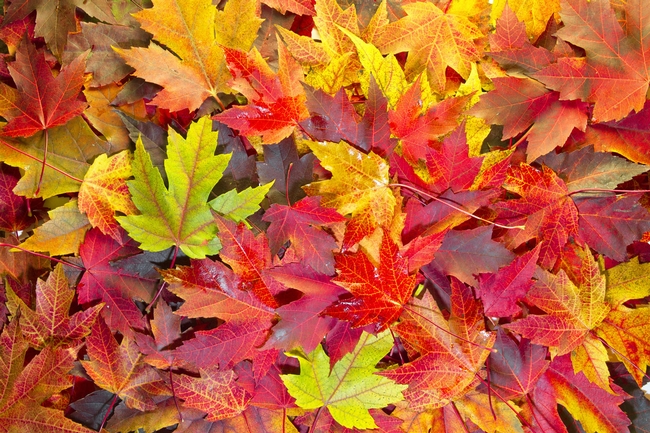The fall equinox (also known as the autumnal equinox) took place on Wednesday, September 22. It is officially fall and it's the time of year when we are awed by the color and beauty of trees in our neighborhood, but have you ever wondered why they change colors?
During the spring and summer the leaves have served as factories where most of the food necessary for the tree's growth are manufactured. This food-making process takes place in the leaf in numerous cells containing chlorophyll, which gives the leaf its characteristic green color. Chlorophyll helps leaves collect sunlight to make food for the tree.
Leaves contain three different types of pigment: Chlorophyll (greens), Xanthophylls (yellows) and Carotenoids (oranges). Most of the year these colors are masked by great amounts of green coloring. The summer sunlight triggers the leaves to keep making more chlorophyll.
As the days start to get shorter and cooler, the tree begins to produce hormones to initiate leaf senescence. Senescence is the process of leaves' breaking down complex molecules into smaller soluble ones, such as sugars and amino acids. These smaller compounds are resorbed by the tree and stored over winter for use in spring. This allows the tree to store energy that would otherwise be lost when the tree sheds its leaves at the end of senescence.
Leaf senescence also includes the formation of the abscission layer, a barrier that forms at the base of the leaf stem (petiole) and severs the flow of materials between the leaf and tree.
Anthocyanins (reds) forms as plant sugars accumulate in the leaves because of the ever-constricting abscission layer. The more sunlight a leaf is exposed to, the more sugar is produced; the more sugars that accumulate in the leaf, the more anthocyanins are produced, and the redder the leaf becomes.
The autumn foliage of some trees show only yellow colors. Others, like many oaks, display mostly browns. All these colors are due to the mixing of varying amounts of the chlorophyll residue and other pigments in the leaf during the fall season.
The weather plays a big part in how long the fall color will stay on the trees. Low temperatures encourages anthocyanin formation which produces that bright red you see in trees like maples. Frost can weaken the vibrant colors and if it's an early frost it can cause the leaves to fall off before they've even turned colors. Drought years can also cause leaves to change color earlier than usual or fall off early.
What should you do with the leaves that fall?
Don't feel obligated to get rid of every last fallen leaf in your yard this fall. Leaves make a terrific mulch that's free, helps suppress weeds and at the same time fertilize the soil as they break down. You can convert leaves into organic matter for your garden by composting them. Some leaves take a long time to decompose. To speed up the process, chop leaves with a lawn mower before adding them to your compost pile. Chopping leaves also prevents them from matting together to form a waterproof surface, a common problem with large leaves.
Leaves that collect beneath shrubs and in planting beds provide winter protection for beneficial insects. Many bird species forage in the leaf layer searching for insects and other invertebrates to eat. If the leaves are falling on your lawn, you do want to get them raked up before they smother the grass.
Get creative. You can make a scarecrow by stuffing leaves into old clothes. Use attractive fall leaves and other fall garden treasures to make creative dining table centerpieces. Having dinner guests? Make place cards by writing guests' names on sturdy leaves using a gold or glitter pen. If you are looking to have a little fun, you can always rake them into a big pile and jump in them or have a leaf fight with the kids.
